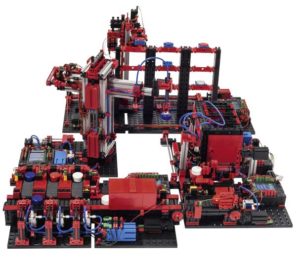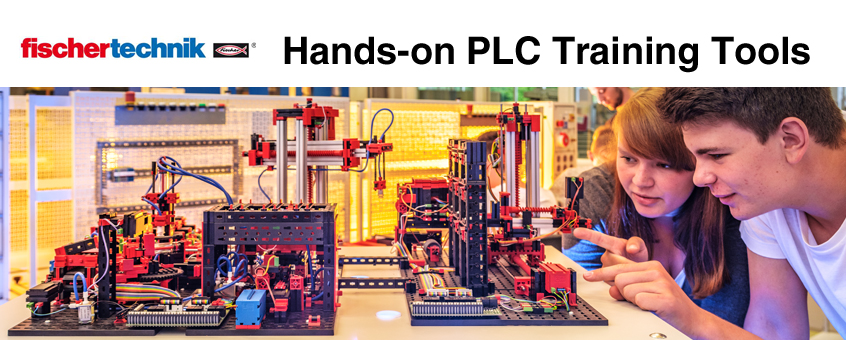As we all know, STEM remains a very hot topic in educational circles. But of course, STEM isn’t just one subject area, but a very broad area of subjects, skills, and disciplines which fall under the all-encompassing umbrella of “Science, Technology, Engineering, and Mathematics”. Today we’re going to focus on a very specific area of STEM, that being programming, or to be exact, the programming of a PLC.
What is a PLC?
The acronym PLC stands for “Programmable Logic Controller”. Essentially, a programmable logic controller/PLC is a very specialized computer used to control machines and processes, typically in an industrial setting such as an automated manufacturing plant. As the world–in particular, the world of manufacturing–becomes more and more dependent upon various types of robotic processes such as would be found here, the need for workers skilled in the programming of such systems grows exponentially in demand.
How much can PLC Programmers earn?
 Of course, it should be no surprise to any educator that programming skills are highly prized, but in the case of PLC programming, particularly so. To provide you with a clearer idea of how valued such skills are, here are some salary figures for PLC programmers, as quoted from a job search website, Neuvoo.com:
Of course, it should be no surprise to any educator that programming skills are highly prized, but in the case of PLC programming, particularly so. To provide you with a clearer idea of how valued such skills are, here are some salary figures for PLC programmers, as quoted from a job search website, Neuvoo.com:
“The average PLC Programmer salary in the USA is $78,000 per year or $40 per hour. Entry-level positions start at $43,924 per year while most experienced workers make up to $132,600 per year.”
In fact, a quick glance at the first page of current job openings for “PLC Programmers” on Neuvoo for the date February 27, 2020, shows fifteen positions being advertised with salaries over $75,000—two of which list salaries of $195,000 per year! It’s no surprise that savvy students are increasingly enrolling in PLC training programs at the college and university level. At the same time, more and more manufacturing companies facing an urgent need to arm their personnel with these vital skills are enrolling their incumbent workers into private training schools offering such programs.
How long does PLC programming take to learn?
Depending on a student’s background and experience, basic PLC programming skills can be learned in as little as 30 to 40 hours of training. If one wanted to become truly proficient in all five of the most widely used PLC programming languages, as listed below, more training would, of course, be required.
Five most popular PLC programming languages (per “Realpars.com”)
- Ladder Diagram (LD)
- Sequential Function Charts (SFC)
- Function Block Diagram (FBD)
- Structured Text (ST)
- Instruction List (IL)
Like computers, there are many different types of PLCs in the marketplace from various manufacturers. Some of the most prominent brand names of PLCs found in use in the United States include Siemens, Allen-Bradley, Panasonic, Honeywell, Mitsubishi, and General Electric.
This all being said, the question that still arises for the educator—whether in the university or vocational school classroom—is how do you teach PLC programming in a way that makes it engaging and relevant to the student, whatever their background? How do you get away from the dryness of textbooks and video presentations, and instead make it realistic and hands-on? One answer is the fischertechnik line of industrial simulation models.
fischertechnik Industrial Simulation Solutions
fischertechnik has been creating tools for teaching students of all ages how technology works for over fifty years. Many of the products offered by fischertechnik are subject-specific sets, focusing on different STEM-related areas such as pneumatics, robotics, or renewable energy. In these sets, students are asked to build a progression of models using the unique fischertechnik system, and then perform various experiments that allow them to explore and understand aspects of that  subject. The line of fischertechnik simulation solutions is something much different. The line consists of a series of pre-assembled, small scale models, which replicate in appearance and function, various automated/robotic machines and systems. Models in the fischertechnik Simulation line include:
subject. The line of fischertechnik simulation solutions is something much different. The line consists of a series of pre-assembled, small scale models, which replicate in appearance and function, various automated/robotic machines and systems. Models in the fischertechnik Simulation line include:
- conveyor belts
- punching machines
- pick and place robotic arms
- color sorting lines
- high-bay warehouse storage systems
Each of these models—and more—are available in 24V versions, utilizing 24V motors and components. These models are designed for use with most popular, industry-standard PLCs, and allow you to create programming using the PLC language of your choosing. Besides these individual models which focus on specific automated processes, fischertechnik also offers an integrated Factory Simulation model. This model consists of four individual work stations—a vacuum gripper robot, a high-bay storage warehouse, a multi-processing station with oven, and a sorting line with color detection—all working together as a self-contained, material cycle.
Advantages of fischertechnik Simulation Solutions
 The line of fischertechnik simulation models was created to offer an engaging way to teach PLC programming in the classroom. They are also ideal for demonstration purposes, whether it be demonstrating automated processes in a vocational setting, or even to demonstrate software or other technology-based offerings in a trade show environment These high-quality, German made products are all assembled by hand. They are designed to work with a wide array of PLCs from many manufacturers, which once again, can be programmed using the language of your choice. Unlike software-based simulations, textbooks, or videos, fischertechnik simulation models allow students to work hands-on with models that realistically replicate the functions of their real-world counterparts. The models are compact in size, and perfectly suited for use in academic labs, corporate offices, or traveling demonstrations. And if you’ve ever priced out any of the other industrial simulation models available elsewhere in the marketplace, you will quickly see that fischertechnik models offer an extremely high level of sophistication and applicability at only a fraction of the cost of the competitor’s products.
The line of fischertechnik simulation models was created to offer an engaging way to teach PLC programming in the classroom. They are also ideal for demonstration purposes, whether it be demonstrating automated processes in a vocational setting, or even to demonstrate software or other technology-based offerings in a trade show environment These high-quality, German made products are all assembled by hand. They are designed to work with a wide array of PLCs from many manufacturers, which once again, can be programmed using the language of your choice. Unlike software-based simulations, textbooks, or videos, fischertechnik simulation models allow students to work hands-on with models that realistically replicate the functions of their real-world counterparts. The models are compact in size, and perfectly suited for use in academic labs, corporate offices, or traveling demonstrations. And if you’ve ever priced out any of the other industrial simulation models available elsewhere in the marketplace, you will quickly see that fischertechnik models offer an extremely high level of sophistication and applicability at only a fraction of the cost of the competitor’s products.
To find out more about the complete line of fischertechnik Simulation Solutions, and to request a brochure showcasing all the products currently available, please contact Studica directly.
One more thing–for those who want to teach or demonstrate aspects of automation and control, but who do not wish to address PLC programming, fischertechnik also offers each of the models described above in pre-programmed 9V versions, which include fischertechnik’s proprietary Robotics TXT Controllers. Once again, please contact Studica for complete details.
COMING SOON: Exploring IoT with fischertechnik Simulation Models
Article Written By Lance Zurek, Product Manager, fischertechnik Education Division at Studica, Inc.
Share this Post

